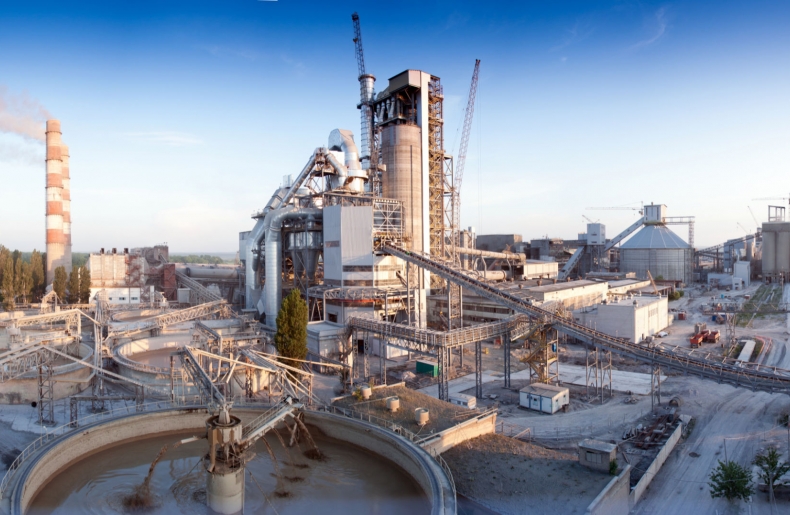Blogs
May 28, 2019Future-proofing environmental emissions monitoring through digitalisation

A range of innovations required
There are shifting sands in the European air emissions monitoring landscape, for example: the pressure on operators to reduce costs and remain competitive; the potential impact of BREXIT on pan-European equipment certification and the impact of digitalisation. With so many elements in flux, it is essential that power, energy and chemical plant operators think ahead and innovate with insight in anticipation of these market dynamics.
High tech solutions for complex CEMS
Smoke stack emissions monitoring during the combustion of a fuel with a highly predictable composition, such as natural gas, is relatively simple. Measurement of carbon monoxide, carbon dioxide and oxides of nitrogen can be achieved using readily available direct-read NDIR and chemiluminescence analysers. On the other hand, waste incineration or the co-combustion of waste with other fuels, which is common in the cement industry to keep operating costs under control, produces a highly variable emissions profile. This is due to the highly unpredictable nature of the waste materials and emissions of toxic gases such as formaldehyde, hydrogen chloride and hydrogen fluoride are possible.
The Fourier Transform Infrared (FTIR) technique is highly flexible and allows the measurement of a wide range of components with leading multi-component continuous emissions monitoring systems (CEMS) capable of simultaneously monitoring 15 chemical species. The instrumentation has classically been used for inorganic species, but recent developments are extending its application to total hydrocarbon measurement and formaldehyde. The scope of measurement is now only limited by the IR activity of the molecules to be measured and the availability of stable and precise calibration gas mixtures.
Extended maintenance intervals can reduce operating costs
CEMS systems are used for regulatory compliance and regular maintenance is essential. This does, however, present an inevitable cost burden to the operator and leads to instrumentation down-time which must be minimised to ensure that emissions are ‘continuously’ monitored. With this backdrop, a reduction in the maintenance frequency of CEMS instrumentation is clearly desirable.
To meet this need for cost effective operations, instrumentation manufacturers have been extending the operating envelope of analysers. The business case for extending the maintenance period of a typical FTIR instrument from 6 months to 12 months has been estimated at 30% annual operating cost savings for end-users. The savings result from reduced labour costs, less down-time and the requirement to purchase fewer spare parts.
As part of the digital innovations that are being implemented to extend maintenance intervals, modern FTIR analysers are capable of condition monitoring using a range of built-in sensors combined with cloud computing. If required, this data can be shared with the OEM to assist with highly responsive trouble shooting. This predictive maintenance functionality enables the timing of interventions to be optimised to minimise the cost whilst simultaneously maximising instrument availability, which is essential for environmental monitoring compliance reasons.
Changes possible after BREXIT?
To achieve certification for these extended maintenance intervals uninterrupted tests over long operating periods must be undertaken. Certification may then be granted according to national programmes. But what will happen after any potential BREXIT if the instrument is to be used in continental Europe, but certification is according to the MCERTS, the Environment Agency of England & Wales Monitoring Certification Scheme? Will UK based certification be recognised in the EU?
Harmonisation of emissions monitoring instrumentation in Europe is the responsibility of the CEN, the European committee for standardization. Of relevance are the type approval procedures according to EN 15267 and the associated quality assurance laid out in EN 14181. The United Kingdom is represented on the CEN by the British Standards Institution (BSI). After BREXIT it is likely that the UK will remain as a member of the CEN group, in a similar way that Norway participates. Under this arrangement, existing MCERTS certificates will remain valid meaning that there would be no changes regarding existing installations of MCERTS approved CEMS systems.
Up to now, the Environment Agency in the UK has made no indication that it will implement a new certification scheme since no advantage would result from a change. Looking deeper into the UK political framework, we can also see that the Government is fully committed to tackling air pollution and climate change and they will want to continue to work with the EU member states in achieving cleaner air. Weighing up all the available evidence, we may anticipate that MCERTS certificates will continue to be valid in the EU after BREXIT, in countries where the certificates are acknowledged today.
Ready for the future with digital innovation
The unique abilities of the FTIR technique will secure its place in emissions monitoring for decades to come. But, to secure its relevance in the 2020s, modern digital technologies are already being integrated by leading manufacturers. Dynamic QR codes are being used to present a plethora of diagnostic information on the instrument display panel, which the operator can relay to the OEM with a mobile phone to get speedy resolution to any trouble-shooting or maintenance requirements.
Secure, accurate and hassle-free emissions data transmission to the regulatory authorities is now also being enabled by high-integrity certified reporting software-systems. For example, in the UK such systems are certified according to the MCERTS system which enables compliance to the Waste Incineration Directive when an FTIR system is used for co-combustion of waste on cement and waste to power facilities.
The range of digital technology which is being offered around a modern CEMS system is becoming as diverse as the range of chemicals that the analyser can measure, thereby future-proofing highly versatile FTIR environmental emissions monitoring instrumentation for decades to come.
Author:




